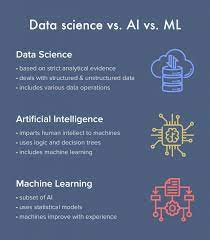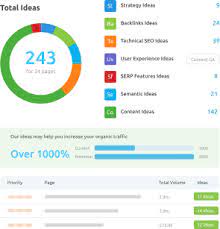AI in Data Science: Transforming the Future of Analytics
Artificial Intelligence (AI) has become a cornerstone in the field of data science, revolutionising how data is analysed, interpreted, and utilised. By integrating AI technologies, data scientists can uncover deeper insights and drive more informed decision-making across various industries.
The Role of AI in Data Science
AI enhances data science by automating complex processes that were traditionally time-consuming and labour-intensive. Machine learning algorithms, a subset of AI, enable systems to learn from data patterns and make predictions with minimal human intervention. This capability significantly accelerates the process of deriving actionable insights from vast datasets.
Key Applications of AI in Data Science
- Predictive Analytics: AI models can forecast future trends by analysing historical data. This is particularly useful in sectors such as finance for stock market predictions or retail for demand forecasting.
- Natural Language Processing (NLP): NLP allows computers to understand and interpret human language. In data science, it is used to analyse text data from social media, customer reviews, and more to gauge public sentiment and improve customer service.
- Anomaly Detection: AI systems can identify unusual patterns or outliers in datasets. This is crucial for fraud detection in banking or monitoring network security threats.
- Image Recognition: In fields like healthcare, AI-driven image recognition helps in diagnosing diseases by analysing medical images with high accuracy.
The Benefits of Integrating AI with Data Science
The integration of AI into data science offers numerous benefits:
- Enhanced Efficiency: Automation reduces the time required for data processing and analysis, allowing businesses to respond quickly to changes.
- Improved Accuracy: By minimising human error, AI ensures more reliable results that lead to better decision-making.
- Scalability: AI systems can handle large volumes of data effortlessly, making them ideal for growing businesses that need scalable solutions.
The Challenges Ahead
Despite its advantages, integrating AI with data science poses challenges. Ensuring data privacy and security remains a top priority as sensitive information is processed through these systems. Additionally, there is a need for continuous learning and adaptation as technology evolves rapidly.
The Future of AI in Data Science
The future looks promising as advancements in AI continue to push the boundaries of what is possible within data science. As algorithms become more sophisticated and computing power increases, the potential applications are limitless. From personalised marketing strategies to autonomous vehicles relying on real-time analytics, the synergy between AI and data science will undoubtedly shape the future landscape across all sectors.
The journey towards fully harnessing this potential requires ongoing collaboration between technologists, policymakers, and industry leaders to address ethical considerations while fostering innovation.
The fusion of artificial intelligence with data science stands at the forefront of technological progress—promising a world where decisions are driven by intelligent insights derived from robust analytical frameworks powered by cutting-edge technology.
Exploring the Role, Applications, Benefits, and Challenges of AI in Data Science
- What is the role of AI in data science?
- How does AI enhance data science processes?
- What are the key applications of AI in data science?
- What benefits does integrating AI bring to data science?
- What challenges are associated with integrating AI with data science?
What is the role of AI in data science?
The role of AI in data science is pivotal, as it significantly enhances the ability to analyse and interpret vast amounts of data efficiently. AI technologies, particularly machine learning algorithms, automate complex analytical tasks that were traditionally performed manually. This automation allows data scientists to uncover patterns, make predictions, and derive actionable insights with greater accuracy and speed. AI also facilitates the handling of unstructured data through techniques like natural language processing and image recognition. By integrating AI into data science processes, organisations can improve decision-making, optimise operations, and innovate across various domains, ultimately driving business growth and competitive advantage.
How does AI enhance data science processes?
AI significantly enhances data science processes by automating and optimising various stages of data analysis. Through machine learning algorithms, AI can efficiently process and analyse vast amounts of data, identifying patterns and trends that might be missed by human analysts. This automation not only speeds up the analytical process but also improves accuracy by reducing the potential for human error. Additionally, AI enables predictive analytics, allowing businesses to forecast future outcomes based on historical data. By incorporating natural language processing, AI can also interpret unstructured data such as text and speech, expanding the scope of insights that can be derived. Overall, AI enhances the efficiency, precision, and scope of data science processes, empowering organisations to make more informed decisions.
What are the key applications of AI in data science?
AI has significantly expanded the capabilities of data science, with key applications across various domains. One prominent application is predictive analytics, where AI models analyse historical data to forecast future trends, aiding businesses in strategic planning and decision-making. In natural language processing (NLP), AI enables the analysis of text data from sources like social media and customer reviews, providing insights into public sentiment and enhancing customer engagement strategies. Another critical application is anomaly detection, where AI systems identify irregular patterns within datasets, crucial for fraud prevention and cybersecurity measures. Additionally, AI-driven image recognition is transforming fields such as healthcare by assisting in the accurate diagnosis of diseases through medical image analysis. These applications highlight how AI enhances efficiency, accuracy, and scalability in data science processes.
What benefits does integrating AI bring to data science?
Integrating AI into data science offers numerous benefits that enhance the overall effectiveness and efficiency of data-driven processes. One of the primary advantages is the automation of complex and repetitive tasks, which significantly reduces the time and effort required for data analysis. This allows data scientists to focus on more strategic aspects of their work, such as interpreting results and making informed decisions. AI also improves the accuracy of predictions and insights by employing advanced algorithms capable of learning from large datasets and identifying patterns that might be missed by human analysts. Additionally, AI enhances scalability, enabling organisations to handle vast amounts of data seamlessly as they grow. The integration also fosters innovation by providing new tools for exploring unstructured data types, such as text or images, through technologies like natural language processing and image recognition. Overall, AI enriches data science with greater precision, speed, and capacity to drive business intelligence.
What challenges are associated with integrating AI with data science?
Integrating AI with data science presents several challenges that organisations must navigate to fully leverage its potential. One of the primary obstacles is data quality and availability; AI systems require vast amounts of high-quality, structured data to function effectively, but obtaining and maintaining such datasets can be difficult. Additionally, there are concerns around data privacy and security, as sensitive information is often processed through these systems, necessitating robust measures to protect against breaches. The complexity of AI models also requires specialised expertise, which can be a barrier for businesses lacking skilled personnel. Furthermore, integrating AI into existing systems may demand significant changes to infrastructure and workflows, leading to potential disruptions. Lastly, ethical considerations around bias in AI algorithms must be addressed to ensure fair and unbiased outcomes. These challenges highlight the need for careful planning and strategic investment when incorporating AI into data science practices.






